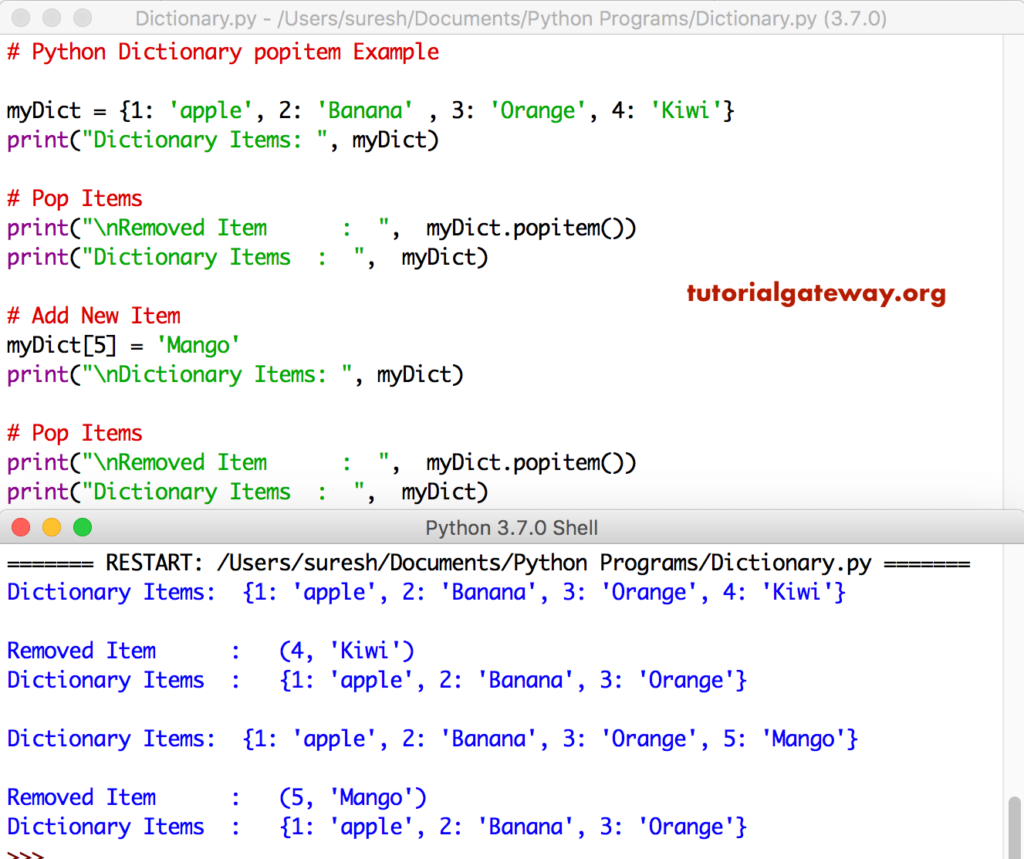
- JOINING DICTIONARIES PYTHON HOW TO
- JOINING DICTIONARIES PYTHON UPDATE
- JOINING DICTIONARIES PYTHON CODE
Notice that in both cases, when dictionaries being merged have identical keys (e.g., 'Science'), the values from the second dictionary are used in the new merged dictionary.

JOINING DICTIONARIES PYTHON HOW TO
How to combine nested dictionaries in for loop. Taking a look at the dictionary weve used, the keys are all in string format, so Python should have no problems concatenating the employee variable to the. How to avoid nested for loops when combining values from two lists of dictionaries in Python 0. The update() method can also only accept the values from a single second dictionary to be added to the first, rather than allowing two or more dictionaries to be merged.Grades1 = Joining multiple lists containing multiple dictionaries to make a list. The update() method will alter the dictionary it is called from, adding the items from another dictionary rather than creating a merged copy. Construct DataFrame from dict of array-like or dicts. We’ve covered appending new values to a dictionary using the update() method here – so why not use it? classmethod omdict(data, orientcolumns, dtypeNone). The merge operations above will overwrite existing values in the order of appearance. A value with the same key in a dictionary in the merge operation will be overwritten by a value at the same key in a subsequent dictionary. In Python 3.5, you can merge two or more dictionaries in a single statement by unpacking the new dictionaries into a new dictionary. Thus, when merging dictionaries, the items from the first dictionary will appear first, followed by items from the second, etc. How to Merge Dictionaries in Python See Python: Tips and Tricks for similar articles. Print(mergedDictionary) Dictionaries are OrderedĪs of Python version 3.7, dictionaries are ordered – the items in them are sequenced in the order they are added.

This is better demonstrated than explained – see the examples below for how it works.īelow, two dictionaries, each describing the attributes of the same cat, are merged into a single resulting dictionary using the dictionary union operator: myDictionary =.You can chain union operator statements to join more than two dictionaries conveniently.When a | is placed between two dictionary variables or values, the statement formed will return a new dictionary containing the values of both.The | (pipe) character acts as the union operator when placed between two dictionaries.Here’s the syntax for the new dictionary union operator: mergedDict = dict1 | dict2

After merging the parts of the string, this.
JOINING DICTIONARIES PYTHON UPDATE
From here onwards we unnests the source data dictionaries and update them with the. As a result, it returns a string that concatenates the strings in iterable like tuples, dictionaries, and sets.

It’s super convenient and is the best way to merge two dictionaries in newer releases of Python. How to implement a left join using the python version of Apache Beam. New to Python 3.9, the dictionary union operator lets you merge two dictionaries in a single line. We’ve covered what dictionaries are in our article here.Īs there are a couple of ways to merge multiple dictionaries in Python, we’ve put together this article separately to make sure we’ve got everything covered! Merging/Joining Using Dictionary Union Operator (Python 3.9 and Up) Merging two lists in Python without using any third-party libraries or functions can be done by using the built-in functions and operators of the language.
JOINING DICTIONARIES PYTHON CODE
Note that the code examples in this article are written for Python version 3 – and will not work with Python version 2! What is a Dictionary in Python? The opposite of the split method is join, which joins. This article will show you the simplest ways to merge two or more dictionaries in the Python programming language. Python 3 often avoids returning lists and dictionaries Library modules have.


 0 kommentar(er)
0 kommentar(er)
